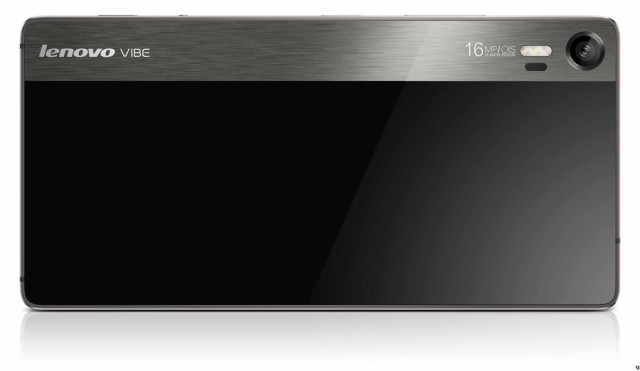Lenovo Vibe Shot Slim Camera-Style Phone

OIS and the IR (infra-red) auto-focus (AF) are excellent feature additions since they address usability (AF speed) and image quality (OIS). IR AF is 2X faster than previous methods used by Lenovo (namely contrast-based AF), so it’s a big deal to capture the moment. Phones like the Galaxy S5 introduced Phase Detection AF, and the LG G3 with a laser-based AF system all brought a significant speed up to acquire focus. This translates directly into a better user experience.
The industrial design language is quite revealing. As you can see on the pictures, Lenovo has deliberately laid things out so that its phone feels like a compact camera when used to take landscape pictures. At the same time, the design keeps the thinness and overall look and feel of a nice smartphone.
Lenovo did not fall in the trap of building a compact camera that happened to be a phone as well. Although often technically interesting, those products just never worked commercially, no matter how good the camera quality was: it has to be a phone first, and it is even better with a large 2900 mAh battery!
And a phone, it is: with a Snapdragon 615 processor with Adreno 405 graphics co-processor (GPU), 3GB of RAM and 32GB of local storage (plus optional 128GB microSD), there’s ample room to store your media files. The phone will come with LTE built-in (the speed remains to be confirmed), and even supports dual-SIM out of the gate.
Before passing final judgement on the Vibe Shot, we would need to snap pictures and see how they look like, but so far, it looks pretty good on the paper and in the photos. It’s hard to tell if it would be able to compete with high-end phones worth twice its price, but for now, it is probably safe to assume that Lenovo is trying to provide a very good camera experience for the price of $349 (no contract). The Galaxy S5, which now sells for $400 or so would be its toughest competitor.
You May Also Like
Popular Right Now
- WhatsApp Introduces Voice Chats For All Groups, Inspired By Telegram
- Volonaut Airbike: Lightweight Flying Superbikes With Jet Propulsion Unveiled
- Flappy Bird Is Back! After 10 Years, It Brings A New Game Experience
- Google Messages Rolls Out On-Device Nudity Detection With Sensitive Content Warnings
- Google AI Mode Adds Multimodal Search To Mobile App
- Leaked Apple Watch Series 10 Prototype Reveals Unique Health Sensor And Potential Future Features
- Canon Unveils PowerShot V1 And EOS R50 V: Best New Vlogging Cameras For 2025
- Bill Gates Predicts: AI Will Replace Doctors And Tutors Within A Decade
- First Shutdown of Niagara Falls in 12,000 Years: A Rare Sight to Behold
- Former Google Engineer claims that humans will achieve immortality soon
- Romotow: The Foldable Camping Trailer Inspired By A USB Flash Drive
- LYRA: Swiss Startup Unveils AR Smart Glasses for Office Work, City Life, And Traveling
- Man Caught in China Smuggling $46K Worth of Intel CPUs Wrapped Around His Waist
- iPhone 15 Pro Max may bring thinner bezels than Xiaomi and Samsung’s latest flagships
- OpenAI's new GPT-4 with a "human-level performance" scored up to 93% on SAT exams
- iPhone SE 4 could be Apple's secret weapon to 'steal' budget customers from Samsung

